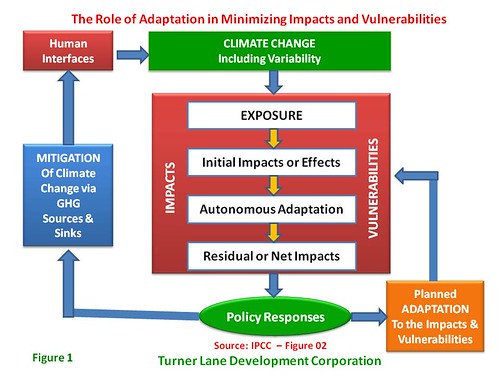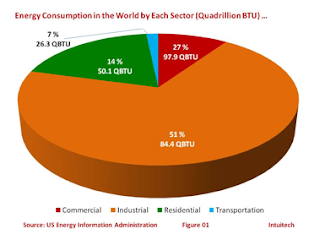Carbon Neutrality
Dr. Mir F. Ali
An incredible number of businesses, universities, and governments around the world are totally committed to the principles of sustainability and they are going through the process of taking inventories of their greenhouse gas (GHG) emissions with the objective to set reduction targets for their respective organizations and jurisdictions. They clearly understand that because greenhouse gases mix in the global atmosphere, the location of greenhouse gas emissions and emission reductions has consequence. Emissions occurring in one area can be neutralized by activity that occurs anywhere in the world, so the emission and the reduction activity do not necessarily need to occur in the same area. They also understand that in the absence of any regulatory support, they can only accomplish so much within a certain period of time but they know for sure that carbon neutrality is their ultimate goal.
Here are some facts that illustrate the magnitude of carbon: Human activity emits roughly 32 billion metric tons of carbon dioxide (CO2)—the primary greenhouse gas— into the atmosphere each year. Worldwide, about 80 percent of those emissions come from the combustion of oil, coal, natural gas, and other fossil fuels; the remaining 20 percent comes from deforestation. Because plants take in CO2, removing them releases some or all of that carbon. Currently, in any given year, the equivalent of about half of total CO2 emissions are absorbed by the world’s oceans, soil, and vegetation, which (together with the atmosphere and fossil carbon deposits) make up the natural reservoirs through which carbon flows over time. The other half of those emissions remain in the atmosphere.
Carbon neutrality is a way of addressing the other half or 16 billion metric tons of CO2 which contributes to the rising atmospheric concentration of CO2 and the gradual warming of the Earth’s climate.
Carbon neutrality could be defined as a net-zero carbon footprint or no net greenhouse gas (GHG) emissions emitted in the atmosphere as a result of performing any agricultural, manufacturing activities or delivering services by a business or government during a particular period of time. The reality is that it may not be possible for some businesses or governments not to emit GHG emissions in the atmosphere due to the nature of their operations which will require those businesses/governments to balance a measured amount of carbon released with an equivalent amount of sequestered carbon or offset.
Here is how carbon sequestration and carbon offset work:
-
Carbon Sequestration: It is the use of practices, technologies, or other measures that increase the retention of carbon in soil, vegetation, geologic formations, or the oceans with the effect of offsetting carbon dioxide emissions from other sources. For instance, agricultural producers can help address greenhouse gas concerns by implementing practices that cause the land to act as a sink for carbon, by decreasing emissions of greenhouse gases from agricultural production activities. Many of the activities that increase the organic content of soils, and thus sequester carbon, also increase agricultural productivity as well as improve soil, air and water quality; and
-
Carbon Offset: It is a mechanism by which the impact of GHG emissions is neutralized through the implementation of an action elsewhere that will consume or reduce emissions by an equivalent amount of GHG emissions. A carbon offset is a financial instrument aimed at a reduction in GHG emissions. Carbon offsets are measured in metric tons of carbon dioxide equivalent (CO2e). One carbon offset represents the reduction of one metric ton of carbon dioxide or its equivalent in other greenhouse gases. There are two markets for carbon offsets. In the larger compliance market, companies, governments, or other entities buy carbon offsets in order to comply with caps on the total amount of carbon dioxide they are allowed to emit. In the much smaller voluntary market, individuals, companies, or governments purchase carbon offsets to mitigate their own greenhouse gas emissions from transportation, electricity use, and other sources.
In addition to CO2, the focus of carbon neutrality includes other five greenhouse gases regulated by the Kyoto Protocol which are measured in terms of their carbon dioxide equivalence (CO2e) - the impact of a GHG has on the atmosphere expressed in the equivalent amount of CO2. The names of those greenhouse gases are: Methane (CH4), Nitrous Oxide (N2O), Hydrofluorocarbons (HFC), Perfluorocarbons (PFC), and Sulphur Hexafluoride (SF6).
Local governments from across B.C. signed a Climate Action Charter in September 2007 with the Province and the Union of BC Municipalities, committing to a goal of becoming carbon neutral by 2012.
In addition to a goal of becoming carbon neutral by 2012, local governments pledged to measure and report on their community’s greenhouse gas emissions profile and work to create compact, more energy efficient communities.
The BC Climate Action Charter recognizes that carbon neutrality involves measuring the greenhouse gas emissions that come from government operations such as buildings and fleet vehicles and then reducing those emissions to net zero. Governments achieve carbon neutrality by reducing emissions where possible, by purchasing carbon offsets to compensate for its greenhouse gas emissions or by developing projects to offset emissions. Such projects may include converting to energy efficient buildings and replacing old fleet vehicles and buses with hybrids.
BC Premier Campbell said that the province will work in partnership with the Union of B.C. Municipalities to develop a framework to track what local governments pay annually in carbon tax. They will be required to report annually on steps they have taken to achieve carbon neutrality by 2012.
“If communities do that, and publicly report on their plan and progress in meeting that goal, they will be eligible to receive a grant equal to 100 per cent of their carbon tax costs,” Campbell said.
The province of British Columbia issued the Community Energy and Environmental Inventory (CEEI) for all BC municipalities in June 2009 which will allow the municipalities a little over three years to set emission reduction targets and do every thing possibly they can do to reduce emissions to zero which may not be realistic for most of the municipalities around the province. As a result, municipalities cannot afford to get excited with the imposed timelines which are supposed to be “volunteering” and they are looking for ways to set realistic reduction targets/timelines and develop action plans and policies to proceed towards their ultimate goal of carbon neutrality. They know that it is going to take a little longer than 2012 but they will get there.
Municipalities may consider using adaptation as a supporting tool for mitigating GHG emissions in their jurisdictions as it helps minimize the overall cost of mitigation. Smart economists like Stern are convinced that adaptation will be crucial in reducing vulnerability to climate change and is the only way to cope with the impacts that are inevitable over the next few decades.
The Intergovernmental Panel on Climate Change (IPCC) defined adaptation as adjustment in natural or human systems in response to actual or expected climatic stimuli or their effects, which moderate harm or exploits beneficial opportunities. The following graph demonstrates how response to climate change through effective policies could use adaptation as an effective tool to help mitigate the overall damage:

Accepting the fact that adaptation is a response to climate change and climate variability, the graph shows how a planned adaptation can help to minimize the impacts and vulnerabilities while policy responses through human interfaces attempt to mitigate climate change and its variability.
Policy-driven adaptation can be defined as the result of a deliberate policy decision. Autonomous adaptation is undertaken in the main by the private sector (and in unmanaged natural ecosystems), while policy-driven adaptation is associated with public agencies either in that they set policies to encourage and inform adaptation or they take direct action themselves.
Unfortunately, there is currently no single independent global standard or international certification scheme for carbon neutrality that can be referred to in support of a claim of neutrality.
Dr. Mir F. Ali is a Sustainability Analyst with Turner Lane Development Corporation, a real estate development company with the commitment to build sustainable communities in British Columbia, Canada (mir@turnerlane.com).

Comments